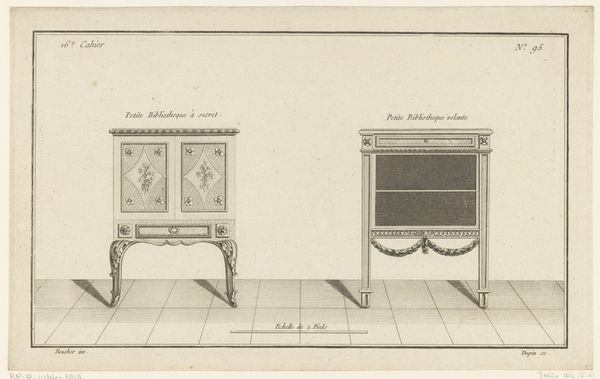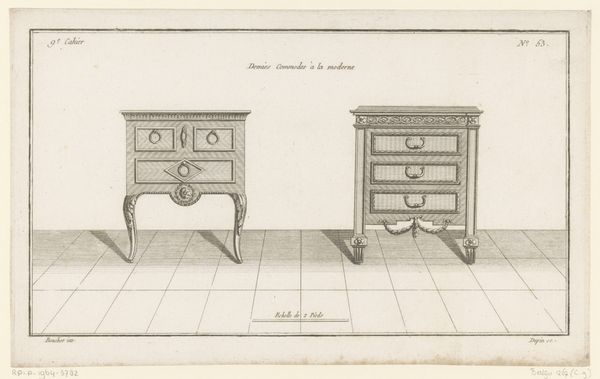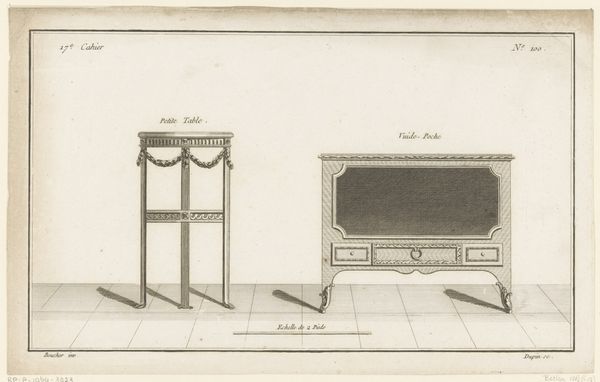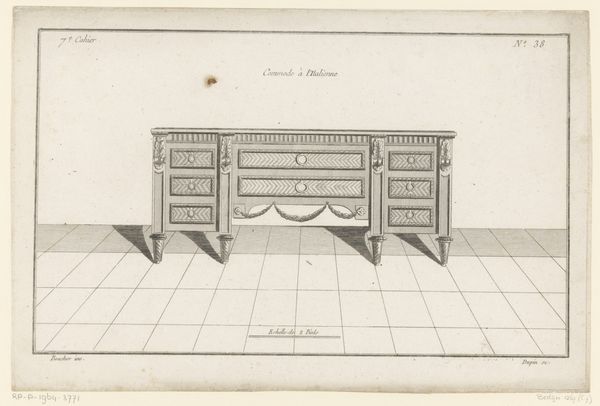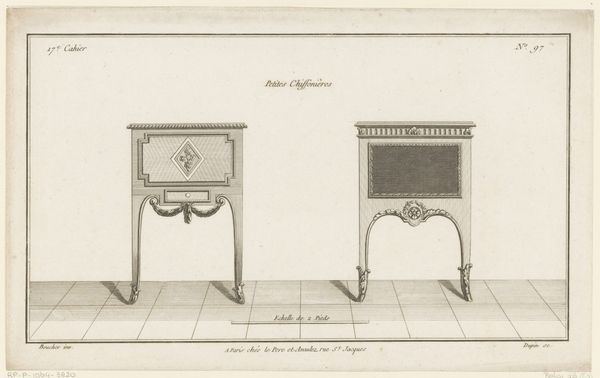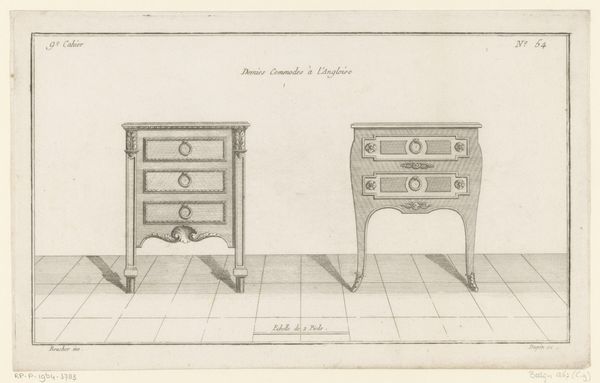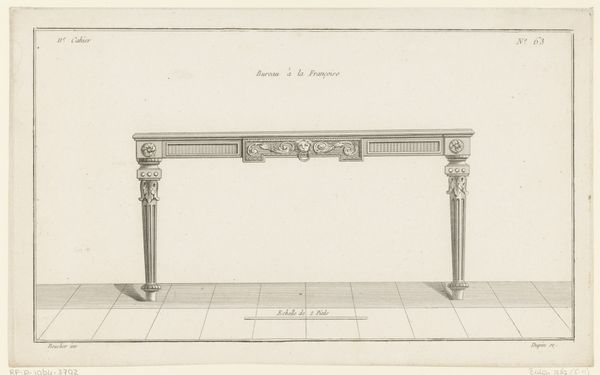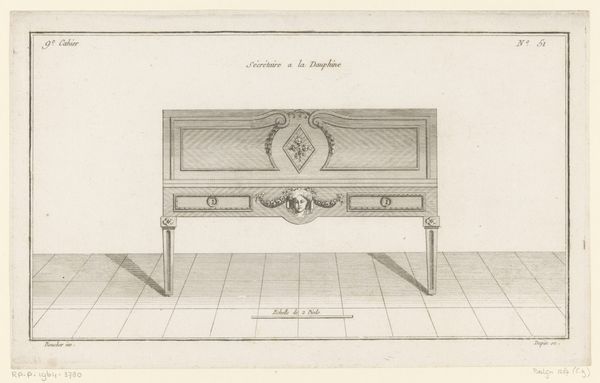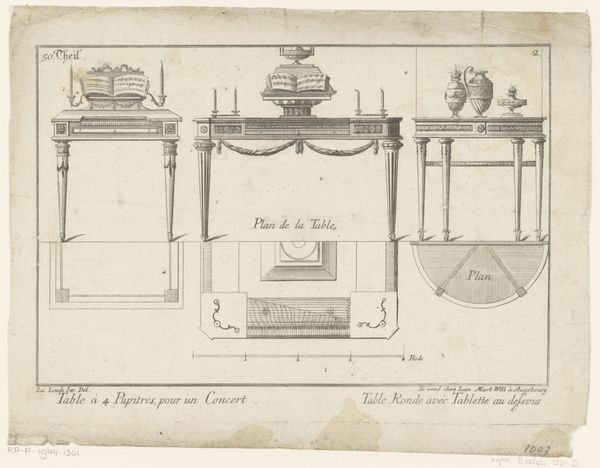
drawing, paper, pen
#
drawing
#
neoclacissism
#
paper
#
form
#
geometric
#
line
#
pen
#
decorative-art
Dimensions: height 194 mm, width 330 mm
Copyright: Rijks Museum: Open Domain
Curator: This pen drawing, aptly named "Twee chiffonieres met schelpmotief," which translates to "Two chiffoniers with shell motif," comes to us from the late 18th century, sometime between 1772 and 1779. Editor: My first impression is…ghostly elegance. They're so precise and pale. They give off the same otherworldly vibe of a perfectly preserved memory. You could almost imagine them fading into the mist. Curator: They are ghostly in a way, aren't they? Nicolas Dupin has rendered these objects with the cool precision of Neoclassicism, really capturing that desire for order and balance in design. There's a fascination with form here. The meticulous line work speaks volumes about the artistry of the period. Editor: Absolutely, they scream order, but look closely, and the curves…the delicate feet. It's like finding a secret smile in a stern portrait. The shell motifs aren't just decoration; they remind us of the organic forms that were idealized during that time, even while trying to constrain art into geometrical shapes. Curator: Yes! And thinking about the shell motifs and the cultural memory that surrounds them, particularly in this era, makes me think about journeys, pilgrimages even. Seashells acted almost as proof of a spiritual quest. It shows how cultural symbolism makes its way into visual imagery, subtly but surely. Editor: That’s beautiful, framing furniture within those cultural journeys of faith and trade. It transforms our mundane view into something much bigger than surface appeal or decorative flair. Curator: In essence, these chiffoniers become these vessels holding cultural history. Editor: Which makes you wonder what the user had to hide in those drawers. Perhaps not just physical objects but aspirations, memories… dreams as evanescent as Dupin's rendering. Curator: Quite. It prompts one to imagine these designs out of the drawing. And to conjure the world for which these objects would serve. Editor: It definitely challenges me to rethink the essence and emotional life of design. It is much more than aesthetics!
Comments
No comments
Be the first to comment and join the conversation on the ultimate creative platform.


